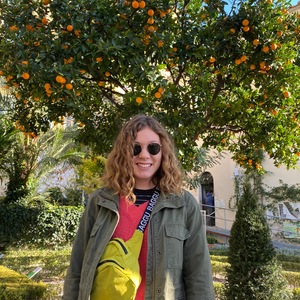A couple days ago I found myself sitting in a coffee shop casually sipping on an amazing cup of coffee (subtle shout out to Kaldi’s, our local coffee shop), and I started to wonder how coffee beans are transformed into this delicious drink. Let’s just say I didn’t get much homework done that day, and instead indulged in the journey of coffee from bean to cup.
Turns out we have been taking coffee for granted considering the long process it takes for it to come our way, so let us begin!
Picking The Fruit
Coffee is so amazing, if only it grew on trees…oh wait it does! Something that may be surprising is that coffee is actually derived from a seed. This coffee seed can take two different routes: it can be dried out and roasted or it can be planted into a coffee tree. If the tree route is selected, then the coffee seeds are planted during the wet season in large, shaded nurseries. Only when they are mature are they planted in a more permanent, open location.
Processing The Cherries
After the cherries have been picked, the farmers have to quickly process the cherries to keep them from going bad. The fruit can be processed via the wet method or the dry method. In the dry method, all the cherries are laid out for the sun to dry them out. The fruits are turned throughout the day and covered when it rains. This method is used when water sources are scarce.
The wet method dries the cherries with only the parchment skin left on by removing the pulp of each fruit. This happens by sending them through a pulping machine where the skin and pulp are separated from the bean. Next, the beans move through water channels where they are categorized into small and large beans based upon if they float or sink. Once the beans are separated by size, they are placed in water-filled fermentation tanks where natural enzymes remove the slick layer known as the parenchyma from the parchment of the bean. Fermentation is complete when the beans feel rough. The beans are then rinsed and finally ready for drying.
Hulling Coffee Cherries
The beans are put into hulling machinery where the parchment layer is removed from wet processed beans and the entire husk is removed from dry processed beans. A second optional step is polishing, which removes any silver remaining skin; however, this makes little difference to the quality of the coffee. Beans are once again sized and carefully examined to make sure the beans are of the highest quality. Any defective beans are removed from the process either by hand or machine.
Green Coffee
The beans, now referred to as green coffee, are exported all over the world. Once they reach their destination they are tested for taste in a process called cupping. However, the beans’ physical appearance is first inspected. After the beans have passed the test, they are roasted, ground, and put in boiling water. The taster, or the cupper, smells the coffee to experience it’s aroma. After a few minutes, the cupper breaks the crust of the grounds and once again smells the coffee. Finally, the cupper slurps up the coffee while inhaling, to ensure the coffee reaches every taste bud. The coffee sits in the cupper’s mouth for a moment before being spit out.
Roasted Coffee Beans
Roasting is what turns the green beans into flavorful, brown beans. Beans are generally roasted in the importing country so the consumer can drink the coffee at its freshest point. The beans are kept constantly moving in the roaster at a temperature around 550 degrees Farhenheit. When the inside of the bean reaches 400 degrees Farhenheit the fragrant oils of the beans emerges. This procedure is named pyrolysis. The beans are then cooled and passed on to the consumer.
A Delectable Cup of Coffee
Finally, the coffee is ground and brewed into a delectable cup of coffee. Whew! That was quite the process. Coffee is definitely a team effort and I for one am very thankful people work so hard to bring us all wonderful cups of coffee from all over the world.


